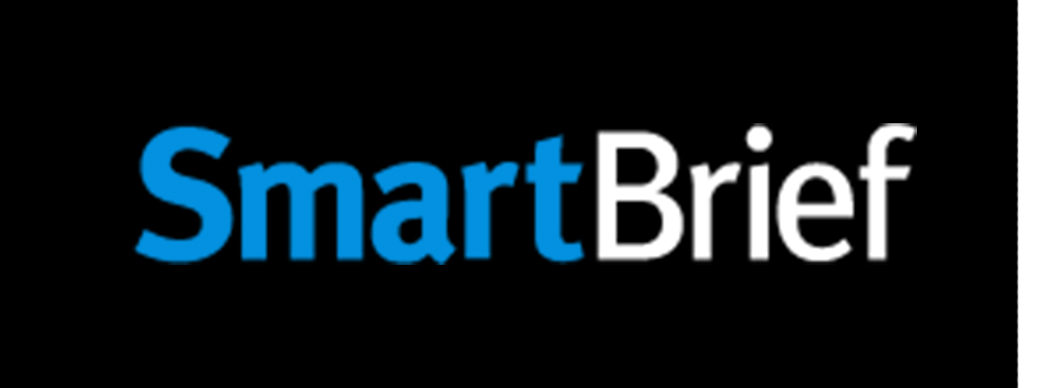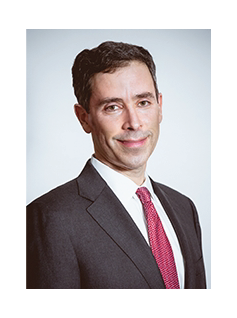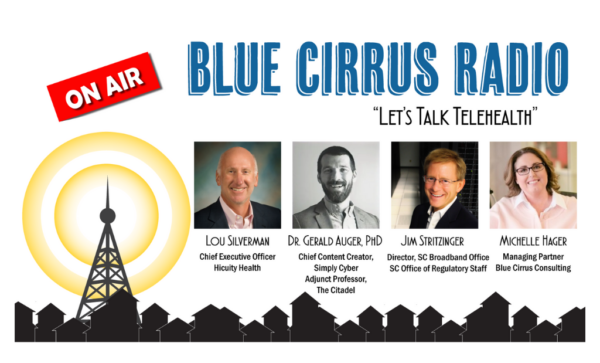A SmartBrief Interview with Marcia Murphy, VP of Clinical Operations and Nursing
 The COVID-19 pandemic has shed harsh light on the fact that nurses are under significant pressure and must attend to numerous responsibilities. SmartBrief recently spoke with Marcia Murphy, VP of Clinical Operations and Nursing at Hicuity Health, on how technology-enabled services can ease the burden.
How do technology-enabled services such as remote telemetry monitoring, tele-nursing and virtual sitting improve workflows and reduce burdens on nurses and charge nurses?
The typical nurse is extremely busy and has a wide range of responsibilities. Making it possible for them to focus primarily on clinical responsibilities that can only be done at the bedside allows better patient care, better clinical leverage, and improved balance and retention for bedside nurses. Implementing dedicated monitoring services enables this level of clinical focus for nurses.
For example, when Hicuity Health helps free a bedside nurse from primary monitoring responsibilities, they can return to full-time patient care, focusing on the patients themselves instead of the equipment. Delegating the monitoring to trained personnel also serves to increase focus on the monitoring itself.
If the administrative responsibility for hiring, training and managing a dedicated monitoring team can be handled elsewhere, the nursing leader can focus on being available to the bedside nursing team, helping to accomplish strategic goals and improving care workflows.
How can these solutions help enable better patient care and outcomes?
Using dedicated, trained service teams to reduce distractions and absorb monitoring responsibilities can yield a tremendous benefit: better nursing focus and improved patient care.
Patients appreciate the improved attention from their bedside nursing staff. And depending on what monitoring services we are providing, improved attention from a dedicated clinical monitoring team can benefit the patient in terms of decreased falls, reduced response time to arrhythmias, and more rapid intervention to address clinical deterioration.
The COVID-19 pandemic has shed harsh light on the fact that nurses are under significant pressure and must attend to numerous responsibilities. SmartBrief recently spoke with Marcia Murphy, VP of Clinical Operations and Nursing at Hicuity Health, on how technology-enabled services can ease the burden.
How do technology-enabled services such as remote telemetry monitoring, tele-nursing and virtual sitting improve workflows and reduce burdens on nurses and charge nurses?
The typical nurse is extremely busy and has a wide range of responsibilities. Making it possible for them to focus primarily on clinical responsibilities that can only be done at the bedside allows better patient care, better clinical leverage, and improved balance and retention for bedside nurses. Implementing dedicated monitoring services enables this level of clinical focus for nurses.
For example, when Hicuity Health helps free a bedside nurse from primary monitoring responsibilities, they can return to full-time patient care, focusing on the patients themselves instead of the equipment. Delegating the monitoring to trained personnel also serves to increase focus on the monitoring itself.
If the administrative responsibility for hiring, training and managing a dedicated monitoring team can be handled elsewhere, the nursing leader can focus on being available to the bedside nursing team, helping to accomplish strategic goals and improving care workflows.
How can these solutions help enable better patient care and outcomes?
Using dedicated, trained service teams to reduce distractions and absorb monitoring responsibilities can yield a tremendous benefit: better nursing focus and improved patient care.
Patients appreciate the improved attention from their bedside nursing staff. And depending on what monitoring services we are providing, improved attention from a dedicated clinical monitoring team can benefit the patient in terms of decreased falls, reduced response time to arrhythmias, and more rapid intervention to address clinical deterioration.

Marcia Murphy
 What are some challenges to implementing remote monitoring technologies, and how can they be overcome?
If a hospital or health system considers implementing a monitoring capability on its own, the wide range of technology and operational requirements are an initial heavy lift. What technologies should we use? Can we utilize our current equipment rather than start over from scratch? What is the best way to schedule and supervise a 24/7/365 monitoring staff? Turning to an experienced partner — especially one with significant clinical expertise, technology and management infrastructure already in place, a range of service relationships and the flexibility to work with existing equipment rather than require an expensive hardware overhaul — can help overcome many of these challenges quickly.
Another significant challenge is recruiting, training and maintaining a high-performing clinical monitoring staff. Again, working with a partner that handles staffing issues or one that can complement your own staffing as needed reduces this risk.
Whether centralized monitoring services are developed internally or externally, the key is to develop clear expectations and trust with the bedside team. This trust does not develop automatically simply because both teams work for the same organization. In fact, in my experience, our external partnership with a hospital or system frequently benefits from our ability to bring knowledge and best practice suggestions from a range of other partner relationships.
What is a surprising or unanticipated benefit of acute care monitoring?
By redistributing monitoring activities, job satisfaction levels for bedside nurses typically increase. With nurse recruitment and retention becoming increasingly difficult, steps that reduce distractions and allow focus on those elements of patient care that first attracted nurses to the bedside become a valuable retention tool, bring benefits to patients and help deliver a solid return on investment for the hospital or health system.
What benefits do health systems gain by working with a partner to conduct remote patient monitoring rather than handling it internally?
An external partner provides the opportunity to move quickly; they already know what success looks like and how to achieve it. In fact, in our implementation projects with new partners, we provide multiple paths to success based on our work with a range of partner hospitals and the ability to draw on that knowledge to work with the system to craft the best-fitting solution.
A partner can also bring scale efficiencies because they’ve already invested in a trained clinical monitoring staff, technology infrastructure, training, management systems and other key building blocks. Hicuity Health leverages these investments on behalf of new partners.
Working with an RPM partner also allows health systems to develop “system-ness” across a multi-hospital footprint. While the ability to customize workflows to local requirements is critical and should be readily enabled by the partner, the ability to standardize system-specific and system-defined attributes, such as care standards, clinical protocols, metrics and targeted outcomes, is a powerful improvement opportunity. Hicuity Health provides a hospital system an enabling mechanism to standardize resources across facilities, report results, compare metrics and help improve the consistency of care.
Operationally, an external partner absorbs the management headaches associated with monitoring services, allowing nursing leadership to turn its attention to nursing and patient care. Ongoing recruitment, training and management are “outsourced” to the external partner. Relying on a dedicated partner such as Hicuity Health to handle this lets leadership focus on its most valuable contributions to the system and its patients.
This article was originally published on Smartbrief.com
What are some challenges to implementing remote monitoring technologies, and how can they be overcome?
If a hospital or health system considers implementing a monitoring capability on its own, the wide range of technology and operational requirements are an initial heavy lift. What technologies should we use? Can we utilize our current equipment rather than start over from scratch? What is the best way to schedule and supervise a 24/7/365 monitoring staff? Turning to an experienced partner — especially one with significant clinical expertise, technology and management infrastructure already in place, a range of service relationships and the flexibility to work with existing equipment rather than require an expensive hardware overhaul — can help overcome many of these challenges quickly.
Another significant challenge is recruiting, training and maintaining a high-performing clinical monitoring staff. Again, working with a partner that handles staffing issues or one that can complement your own staffing as needed reduces this risk.
Whether centralized monitoring services are developed internally or externally, the key is to develop clear expectations and trust with the bedside team. This trust does not develop automatically simply because both teams work for the same organization. In fact, in my experience, our external partnership with a hospital or system frequently benefits from our ability to bring knowledge and best practice suggestions from a range of other partner relationships.
What is a surprising or unanticipated benefit of acute care monitoring?
By redistributing monitoring activities, job satisfaction levels for bedside nurses typically increase. With nurse recruitment and retention becoming increasingly difficult, steps that reduce distractions and allow focus on those elements of patient care that first attracted nurses to the bedside become a valuable retention tool, bring benefits to patients and help deliver a solid return on investment for the hospital or health system.
What benefits do health systems gain by working with a partner to conduct remote patient monitoring rather than handling it internally?
An external partner provides the opportunity to move quickly; they already know what success looks like and how to achieve it. In fact, in our implementation projects with new partners, we provide multiple paths to success based on our work with a range of partner hospitals and the ability to draw on that knowledge to work with the system to craft the best-fitting solution.
A partner can also bring scale efficiencies because they’ve already invested in a trained clinical monitoring staff, technology infrastructure, training, management systems and other key building blocks. Hicuity Health leverages these investments on behalf of new partners.
Working with an RPM partner also allows health systems to develop “system-ness” across a multi-hospital footprint. While the ability to customize workflows to local requirements is critical and should be readily enabled by the partner, the ability to standardize system-specific and system-defined attributes, such as care standards, clinical protocols, metrics and targeted outcomes, is a powerful improvement opportunity. Hicuity Health provides a hospital system an enabling mechanism to standardize resources across facilities, report results, compare metrics and help improve the consistency of care.
Operationally, an external partner absorbs the management headaches associated with monitoring services, allowing nursing leadership to turn its attention to nursing and patient care. Ongoing recruitment, training and management are “outsourced” to the external partner. Relying on a dedicated partner such as Hicuity Health to handle this lets leadership focus on its most valuable contributions to the system and its patients.
This article was originally published on Smartbrief.com


